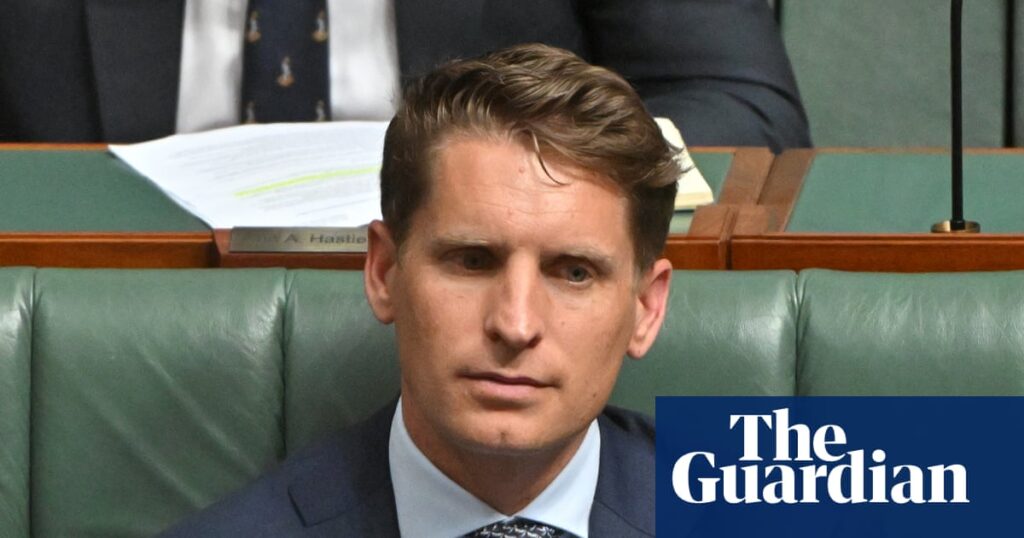Senate estimates week in federal parliament is a rare chance for an opposition to subject a government to sustained scrutiny.
Indeed there is much for the opposition to scrutinise over the upcoming three days of hearings, including the government’s oversight of the triple-zero system, handling of aged care reforms and the circumstances surrounding the return of six Australians from a Syrian detention camp.
But as Coalition MPs and senators returned to Canberra ahead of parliament’s resumption on Tuesday, there was widespread resignation and frustration that the spotlight and scrutiny would instead be firmly on them.
Again.
The spotlight, and the lenses of the press gallery photographers, will be trained on Andrew Hastie as the Liberal MP settles into his new seat on the opposition backbench.
Hastie has taken the rare step of demoting himself, sensationally quitting shadow cabinet on Friday over a split with the opposition leader, Sussan Ley, on immigration.
The former Special Air Service solider claimed Ley, in the text of a “charter letter” issued last week, effectively froze him out of the process for developing the Coalition’s immigration policy by handing that responsibility to junior colleague Paul Scarr.
Sign up: AU Breaking News email
Given his outspoken view on the need to cut immigration, Hastie felt his position in shadow cabinet – where all members are bound to support agreed positions – was untenable.
Liberal sources close to Hastie believe the West Australian could have tried to quietly resolve or accept Ley’s directive if he wanted to avoid taking the drastic step of resigning from the frontbench.
But he didn’t want to. That’s the point.
The contents of the “charter letter” was merely a convenient excuse for Hastie to jettison his shadow cabinet responsibilities, allowing him total freedom to prosecute his nationalist agenda on energy, immigration and domestic manufacturing.
Remember, he had already threatened to quit the frontbench if the Liberal party recommitted to net zero, meaning this moment might have come regardless.
So what now?
Hastie told reporters on Saturday that he is not planning to challenge Ley for the leadership, an assurance his allies privately confirmed to Guardian Australia.
The senior shadow cabinet minister James Paterson – a friend and factional ally of Hastie’s – said Ley had the “overwhelming” support of the party room.
That is true.
after newsletter promotion
But Hastie’s self-demotion means Ley must now contend with the distraction of a colleague with well-publicised leadership ambitions articulating a very different vision for the future of the party.
That might not end Ley’s leadership but it will undermine it, possibly to the point that, in the eyes of colleagues, her own job is untenable.
Adding to the drama on Monday, the Nine papers reported that former opposition leader Peter Dutton singled out Hastie for criticism in his feedback to the Liberal party’s campaign review.
Dutton’s allegation that Hastie went “on strike” in the previous term was interesting if indeed that’s what he told the review.
What is more interesting is that Dutton’s alleged evidence from a confidential interview with the review’s co-chairs made its way into the public domain.
One of the review’s co-chairs, Nick Minchin, told The Australian that Dutton “avoided criticisms of his shadow ministers” in the interview, none of which was written down or relayed to others.
Allies of Hastie suspect the leak was a deliberate attempt to sabotage him, in doing so strengthening Ley’s leadership.
Whatever the motivation it created another distraction, drawing yet more negative attention to an opposition struggling in the polls after a historically bad defeat.
Hastie said he quit the shadow cabinet to provide “clear air” to Ley.
It’s likely to do the opposite.

